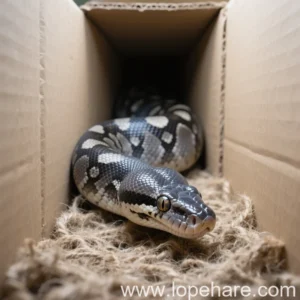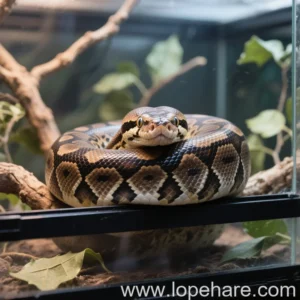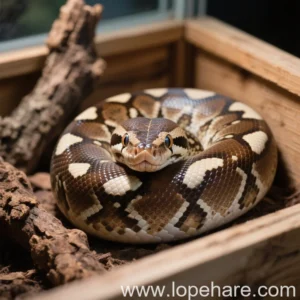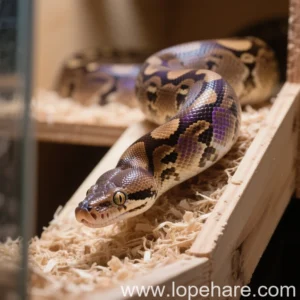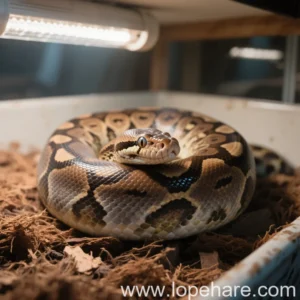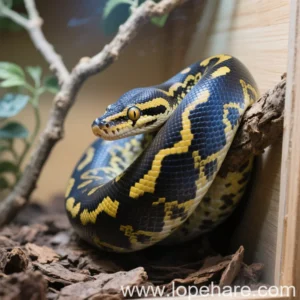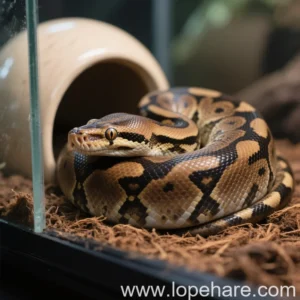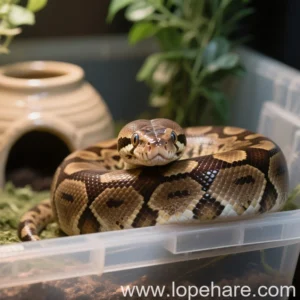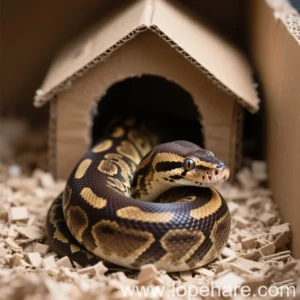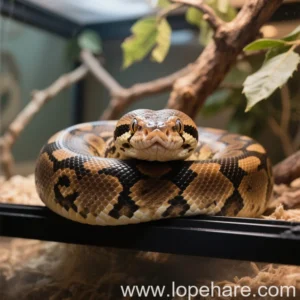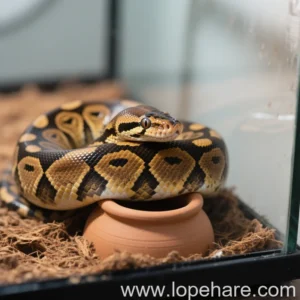Ball Python Myths Debunked: Separating Fact from Fiction for New Owners
Introduction: Why Debunk Myths?
At lopehare, we’re passionate about helping enthusiasts provide the best possible care for their unique pets. The Ball Python (Python regius) is one of the most popular pet snakes worldwide, known for its docile temperament and manageable size. However, their popularity has also led to the spread of numerous myths and misconceptions about their care. These myths, if followed, can lead to health problems, stress, and a reduced quality of life for the snake. As editors dedicated to providing professional, fact-based guidance for exotic pets, we believe it’s crucial to debunk common ball python myths to ensure these beautiful creatures receive the proper husbandry they deserve.
Myth 1: Ball Pythons Are Inherently Picky Eaters
This is perhaps the most frustrating myth for new keepers. While it’s true that Ball Pythons can occasionally go off food, particularly during specific times like shedding, breeding cycles, or if husbandry is incorrect, the idea that they are *naturally* picky eaters is misleading. A Ball Python refusing food is almost always a sign that something is wrong with their environment, stress levels, or health.
The Reality: Healthy Ball Pythons with correct husbandry (temperature, humidity, hides, lack of stress) are typically reliable eaters. Refusal to eat is a symptom, not a characteristic. Common causes include:
- Incorrect temperature/humidity gradients (too hot, too cold, too dry).
- Lack of secure hiding spots.
- Frequent handling or disturbances after feeding attempts.
- Prey item is too large or improperly presented.
- Shedding cycle is approaching or in progress.
- Illness (though this is less common as the primary reason for a single missed meal).
Troubleshooting husbandry issues is the first step when a Ball Python stops eating, rather than assuming it’s just “being a Ball Python”.
Pro Tip: Ensure your feeder rodents are appropriately sized (no wider than the widest part of the snake’s body) and warmed to body temperature before offering.
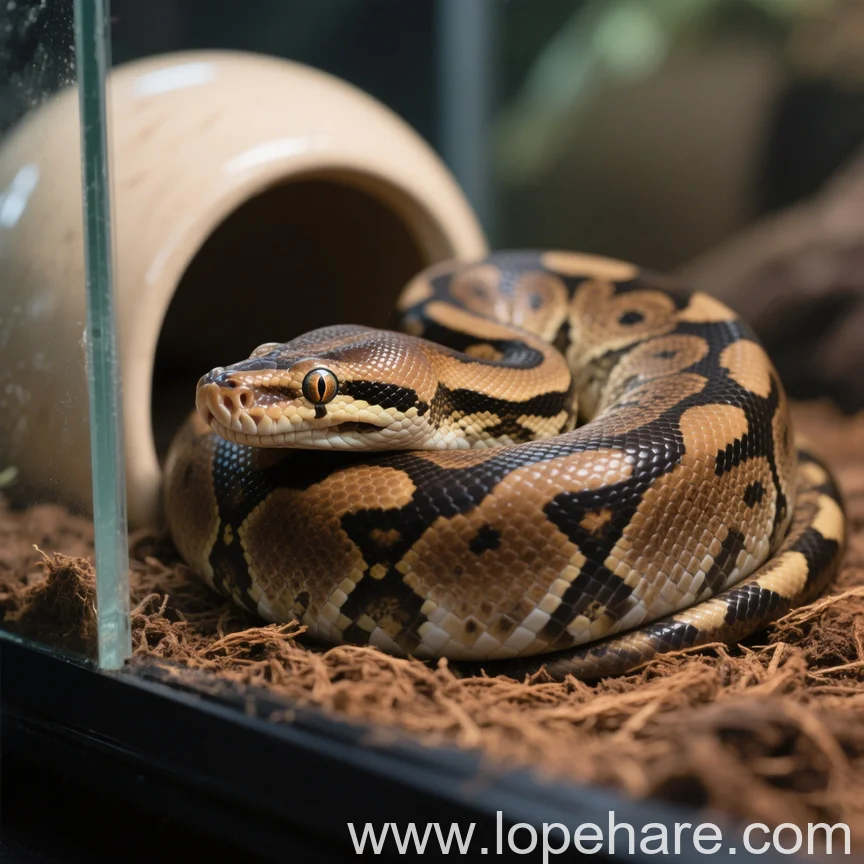
Myth 2: Ball Pythons Thrive in Small Enclosures
This myth often stems from the fact that Ball Pythons are ambush predators that spend time hidden. Some believe they prefer cramped spaces to feel secure. While security is important, this doesn’t mean they don’t need space to move and exhibit natural behaviors.
The Reality: Ball Pythons are more active than given credit for, especially at night. They climb, explore, and need room to stretch out fully. An adult Ball Python (typically 3-5 feet long) should have an enclosure that is at least 4x2x2 feet (Length x Width x Height). This size recommendation, supported by modern herpetocultural standards, allows for proper temperature and humidity gradients, multiple hides (warm and cool side), enrichment items like branches for climbing, and space for the snake to move freely. A small enclosure can lead to stress, lack of exercise, and difficulty maintaining stable environmental parameters.
Myth 3: Ball Python Care Is Basic and Easy
Compared to some highly complex species, Ball Pythons *can* be considered less demanding, but they are by no means “easy” or “basic” pets. They have specific environmental requirements that must be met consistently.
The Reality: Proper Ball Python care requires attention to detail regarding:
- Temperature: A thermal gradient is vital, typically ranging from a basking spot around 88-92°F (31-33°C) to an ambient cool side of 75-80°F (24-27°C). Night drops are usually not required.
- Humidity: This is critical for respiratory health and shedding. Levels should ideally stay between 50-60% ambient, with periods of 70-80% or higher during shedding. Achieving this often requires specific substrates, enclosure types, and potential misting or fogging.
- Enrichment: Providing hides, branches, and different textures allows for natural behaviors and reduces stress.
- Monitoring: Regular monitoring of temperatures, humidity, snake behavior, and stool is necessary.
- Feeding: While often only weekly or bi-weekly for adults, proper feeder sourcing, storage, warming, and presentation are important.
Mistakes in husbandry are the leading cause of health issues like respiratory infections and shedding problems. Saying their care is “basic” overlooks these crucial details.
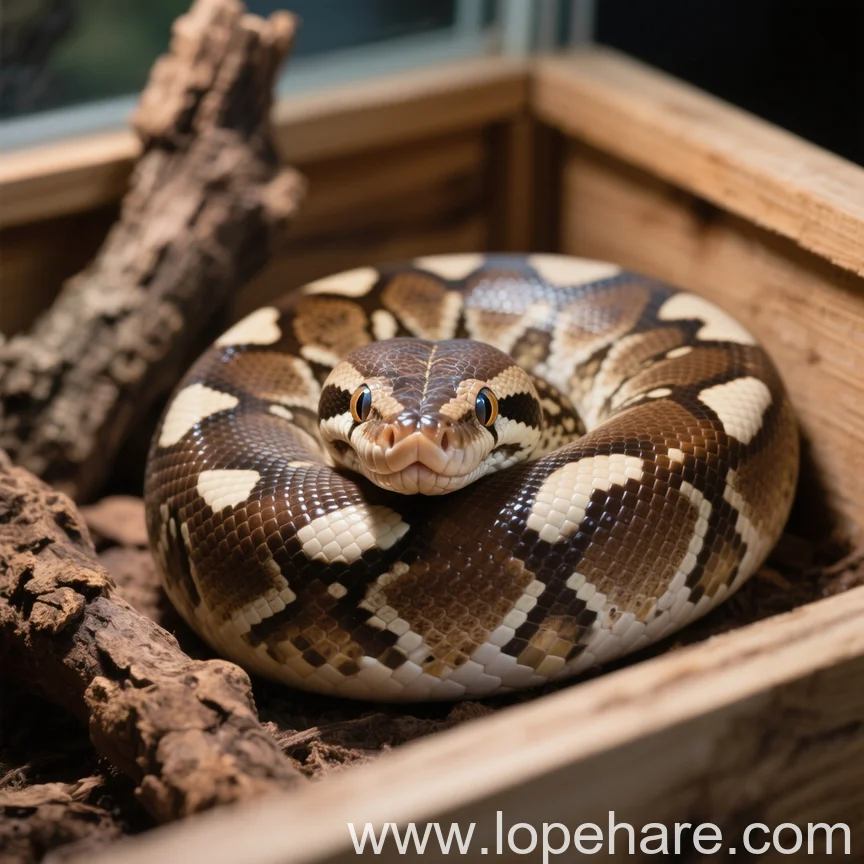
Myth 4: Ball Pythons Should Be Handled Constantly to Be Tame
While Ball Pythons are known for being handleable, overhandling can be extremely stressful for them.
The Reality: Ball Pythons are not dogs or cats; they do not crave or benefit from constant interaction. Handling should be done respectfully, for short periods, and not immediately after feeding or when the snake is in shed. Excessive handling can lead to stress, regurgitation, and increased susceptibility to illness. Think of handling as something *you* enjoy that the snake tolerates, rather than something necessary for their well-being or taming. Consistency over quantity is key for building trust.
Myth 5: A Ball Python Shedding Poorly Is Normal
A complete, single-piece shed indicates healthy skin and proper hydration/humidity levels. Patchy or incomplete sheds (dysecdysis) are *not* normal and are a primary indicator of insufficient humidity.
The Reality: Healthy Ball Pythons shed their skin in one piece, including the eye caps. If a snake has stuck shed, particularly stuck eye caps, it is a sign that the humidity in its enclosure is too low. Persistent poor sheds can lead to eye damage, constriction issues, and other health problems. Increasing humidity before and during a shed cycle is crucial. Consulting our resources on understanding ball python husbandry requirements can provide more detailed guidance on maintaining appropriate humidity.
Myth 6: Ball Pythons Don’t Need UVB Lighting
Traditionally, many snake keepers believed that nocturnal or crepuscular snakes like Ball Pythons didn’t benefit from UVB lighting. This view is increasingly being challenged by modern research and experienced keepers.
The Reality: While Ball Pythons primarily hunt at night, they are often crepuscular (active during dawn and dusk) and may bask during the day in the wild. Providing appropriate low-level UVB lighting (e.g., a 5-6% UVB output T5 tube across part of the enclosure) allows them to synthesize Vitamin D3 if they choose to expose themselves. Even if they obtain Vitamin D3 from properly supplemented prey, UVB is believed to have other benefits, including regulating natural cycles and potentially enhancing overall well-being and immune function. While perhaps not strictly *essential* if D3 is provided in the diet, it is considered beneficial and contributes to a more naturalistic environment, aligning with the best practices promoted here at lopehare.
Learn more about reptile lighting requirements from reliable sources like veterinary journals or experienced herpetologists.

Conclusion: Responsible Keeping
Debunking these common myths is vital for responsible Ball Python ownership. They are wonderful pets, but like any animal, they have specific needs that must be met. Assuming care is “easy” or believing common folklore over scientific evidence and experienced keeper knowledge does a disservice to these incredible reptiles.
By understanding the realities of ball python basic care and common misconceptions, prospective and current owners can ensure their snakes live long, healthy, and enriching lives. Always prioritize research from reputable sources and be willing to adapt your methods based on new information and your snake’s individual needs. At lopehare, we’re committed to being your trusted source for accurate exotic pet information.
Citations
[1] Python regius. In Wikipedia. Retrieved from https://en.wikipedia.org/wiki/Python_regius
